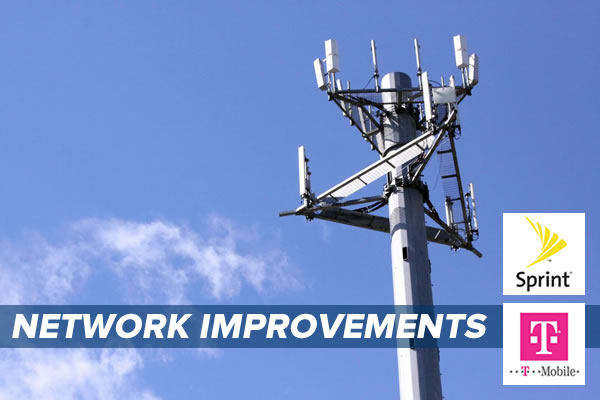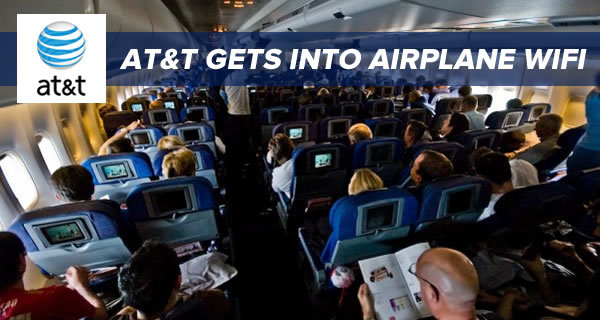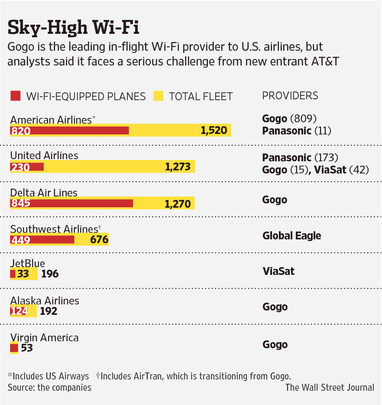AT&T gets into the in-flight wifi business
AT&T announced on Monday that they’re joining forces with Honeywell International to provide high-speed, in-flight wifi in the U.S.. The service would give fliers access to AT&T’s 4G and LTE service from their airline seats.
Michael Small, CEO of Gogo, who in six years has managed to capture half the market, says he isn’t worried. “An entrant to the U.S. market at this state is too little, too late,” he said. “We believe airlines are going to be making a lot of decisions about connectivity this year and next,” a time frame during which AT&T will be getting their service set up while Gogo is already in operation.
Gogo may have a significant share of the wifi on US flights, but theirs is an expensive business. The company has been posting increasing losses over the past two years — $96 million in 2012, and $146 million in 2013. Deep-pocketed rivals with other sources of revenue like AT&T — and Panasonic, who bought in-flight entertainment provider LiveTV in March for almost twice as much as Gogo’s 2012 and 2013 losses — could simply choose to play the waiting game and let Gogo spend itself out of existence…or into acquisition.
The market seems to think that AT&T, despite being the new kid on the block in this particular market, are poised to succeed. Here’s a CNNMoney report on that sentiment:
Other reports on AT&T’s entry into the in-flight wifi business:
- AT&T Plans to Provide Wireless Internet for Airplanes (New York Times)
- Uh-Oh, Gogo: AT&T Says It’s Building a Better In-Flight WiFi (Yahoo! Tech)
- AT&T, Honeywell to challenge Gogo’s airborne Web business (Chicago Tribune)
- Mobilizing the Sky: AT&T Building 4G LTE In-Flight Connectivity Service (MarketWatch)
- AT&T to take on Gogo with in-flight Wi-Fi (PC World)
Verizon has a secret cave full of backup equipment in case of a crisis or natural disaster
 Sixty feet below the ground, in an undisclosed location — but presumably within driving distance of the studios of Kansas City’s FOX 4 News studios — is Verizon’s cave of recovery equipment. The cave is climate-controlled and protected from the elements, and the gear allows Verizon to restore service in hours when the region’s tornadoes or other natural disasters destroy a cellular tower, cut a fiber line, or disrupt power.
Sixty feet below the ground, in an undisclosed location — but presumably within driving distance of the studios of Kansas City’s FOX 4 News studios — is Verizon’s cave of recovery equipment. The cave is climate-controlled and protected from the elements, and the gear allows Verizon to restore service in hours when the region’s tornadoes or other natural disasters destroy a cellular tower, cut a fiber line, or disrupt power.
Tony LaRose, head of operations for the facility says “We really got concerned after the Joplin tornado went through about all this equipment just being out in a parking lot. We started looking around thinking how can we make that equipment more secure? This cave location was a perfect solution.”
Network improvements at Sprint and T-Mobile

While T-Mobile have been making headlines by competing very fiercely on price and eliminating overage fees, the cellular market isn’t an overly price-sensitive market, especially when factors such as the network weigh heavily when customers choose a carrier. Network speed is usually a selling point, and as we reported in an earlier article, the crowdsourced wireless analytics group OpenSignal declared that T-Mobile had the fastest LTE network in March, boasting average speeds of 11.5 Mbps (megabits per second).
Speed isn’t the only issue with cellular data, however. If you’ve ever had full signal strength and a fast connection only to lose it because you walked a couple dozen paces in the wrong direction, you know that stability is also important. Most current LTE systems use what’s called 2×2 MIMO antenna technology. MIMO is short for “Multiple In, Multiple Out”, and the 2×2 means that the connection in your phone is established by 2 antennas at the cellular tower, and 2 in your phone. This year, starting in Chicago, Dallas, and San Antonio, T-Mobile plans to deploy 4×2 MIMO systems, which doubles the antennas at the tower that establish the connection with your phone and ensures a better, more stable connection.
T-Mobile have also just closed a deal to acquire access to the very desirable 700 MHz spectrum from Verizon. This frequency band, which is lower than the 1700 – 2100 MHz range in which T-Mobile currently operates, doesn’t carrier as much data as higher frequencies, but travels farther and penetrates barriers such as buildings and thick vegetation. This new frequency band will be used to improve coverage in “nine of the top 10 and 21 of the top 30 metro areas in the country” including Atlanta, Dallas, Detroit, Houston, Los Angeles, Miami, New York, Philadelphia, and Washington D.C..
Sprint is also deploying improvements to its network in the form of Sprint Spark, a technology that uses three different radio frequency ranges and supercharges data transmission speeds to 50 to 60 Mbps, which is about ten times as fast as the average U.S. data speed (according to OpenSignal, the average data transmission speed on U.S. LTE networks is 6.5 Mbps). Spark will appear in 100 U.S. cities over the next three years.
For more reports on Sprint and T-Mobile’s network improvements:


